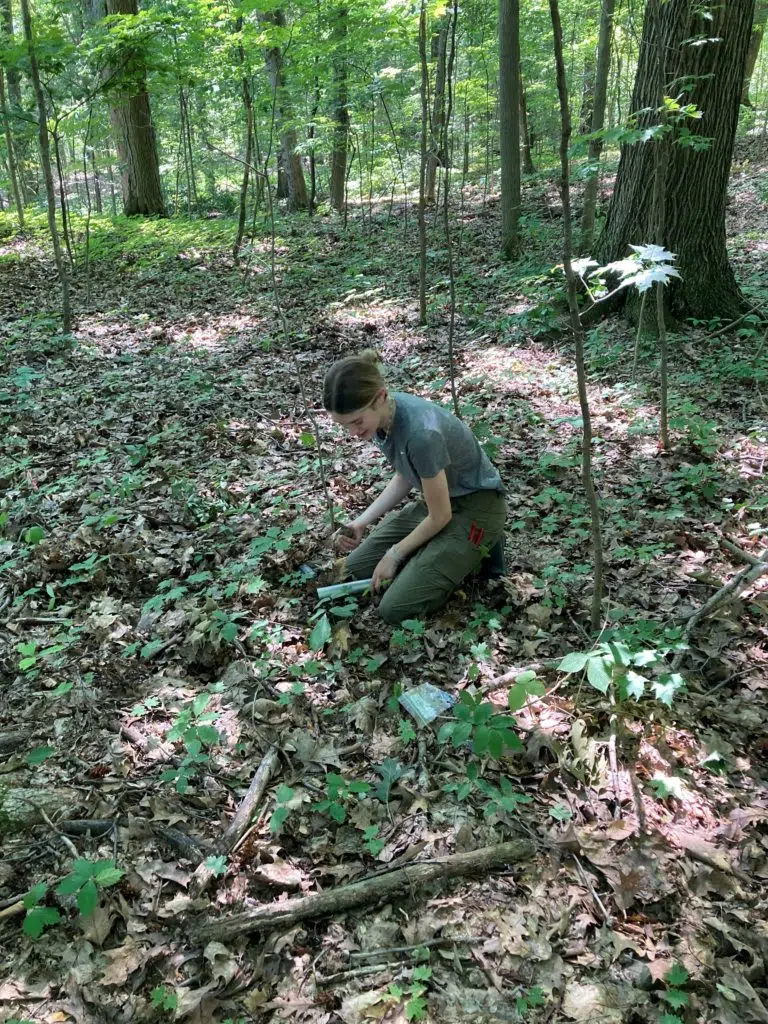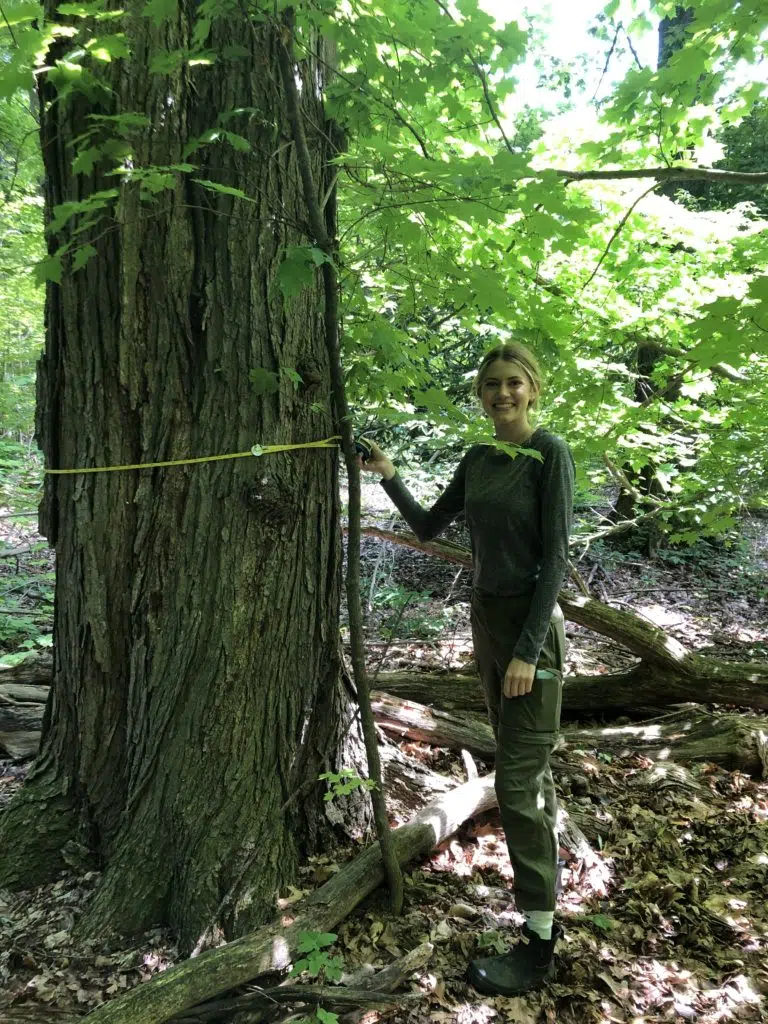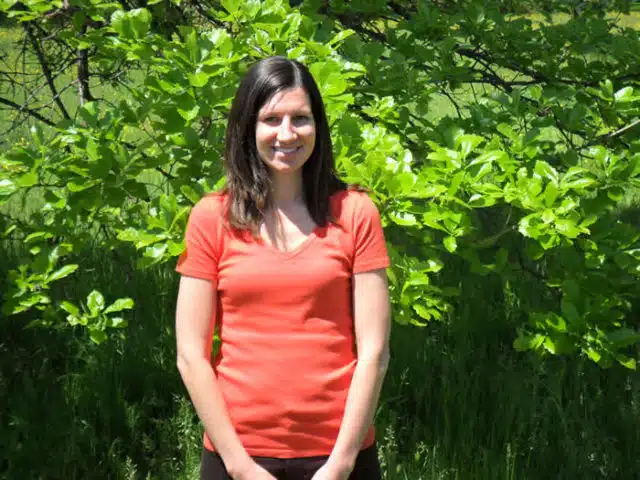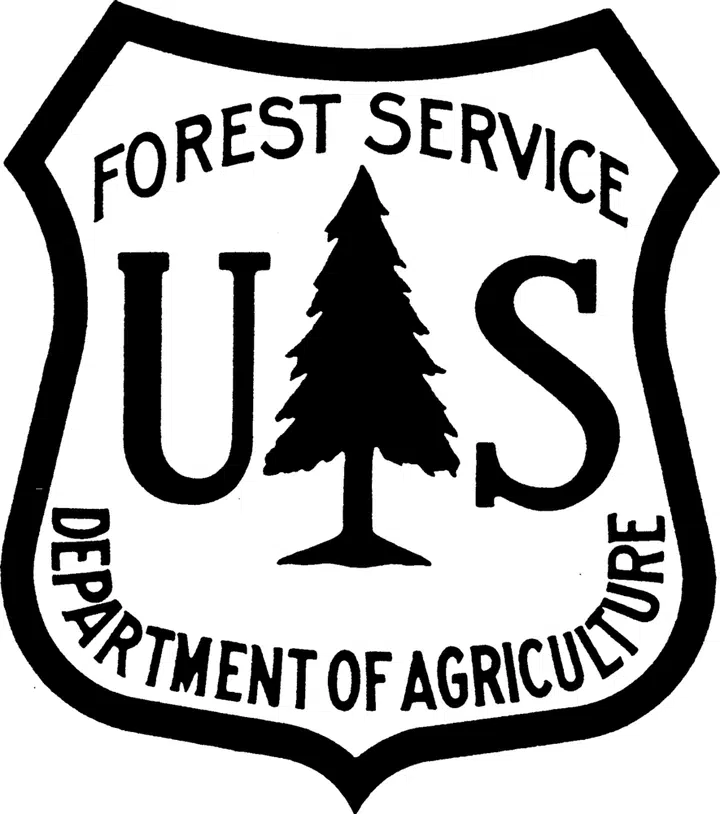
by Sarah Kyker
We are continuing to celebrate National Mushroom Month at HF&G all September long! Today, we want to appreciate fungi even when they are not fruiting. While mushrooms and other sporocarps are great and certainly worth celebrating, they are a short stage in the fungal life cycle. The majority of a fungus’s life is spent belowground and out of sight, as fungal hyphae. Fungal hyphae are very thin, hair-like structures that are only about 3-4 micrometers wide. This is finer than a single strand of human hair. But, the fact that hyphae are small and exist belowground doesn’t make them unimportant; it’s actually the opposite! Fungal hyphae belowground are very active and very important to the health of their habitats!
Fungal hyphae from one type of fungi, mycorrhizal fungi, are especially important for plants. Mycorrhizal fungi live in association with plant roots in what ecologists call a mutualism. This means that both organisms benefit. How do both plants and fungi benefit from the relationship? The fungi extend their hyphae into the soil to absorb soil nutrients which they provide to the plants. In exchange, the fungi receive simple sugars from the plant which the plant creates through photosynthesis.
In the soil ecology lab at HF&G, our research aims to link plant health aboveground with their mycorrhizal partners belowground. For example, we have been studying how the legacy of acid rain affects forests for the past 13 years. The soils in our forests have a pH of around 4, in part due to the decades of acid rain that plagued Northeastern Ohio in the 1900s. In certain areas of the forest, we reversed this acidification by applying limestone and bringing the soil pH to around 6. One of our findings from the 13 years of this research is that maple trees have reduced growth in acidic soils when compared to the soils where we applied limestone.
Of course, our first question when we noticed that soil pH affected maple tree growth was, “How is this related to mycorrhizal fungi belowground?” This is where our 2022 summer intern, Alexa Busby stepped in! For her summer research project, Alexa sampled the tree roots and assessed mycorrhizal colonization. Alexa did not find any change in the mycorrhizal fungi on the maple tree roots between the acidic soils and soils treated with limestone. This is good news; it means that the reduced tree growth is not because the acidic soils are inhibiting mycorrhizal fungi. Now we have a new hypothesis for why the maple tree growth is reduced in acidic soils! Perhaps it is related to the trees putting more effort into reproduction and that is leading to the reduction in growth. But, this is a project for another day (or another intern)!


If you want to learn more:
To hear more about how we study mycorrhizal fungi in the forests at Holden Forests and Gardens, join Sarah Kyker for a class and tour of the lab at the Long Science Center on September 18th. Registration is available on our website here.

Sarah Kyker, PhD
Postdoctoral Research Associate
Dr. Sarah Carrino-Kyker is a microbial ecologist interested in the influence of environmental change, both natural and human-caused, on microbial communities. Because microorganisms are small in size, they are environmentally sensitive. Yet their health and functionality can have a large impact on the overall health of a habitat due to their role in ecosystem processes. Her current research is focused on the soil communities of forests, how they’re impacted by environmental changes, and how these impacts in turn affect the health of the overall habitat or ecosystem.











